What the West Learned About Japanese Culture from Anime

Anime fans may know by heart the names of their favorite characters or even theme songs, but how much do they know about Japanese culture? There are many mistakes visitors from the West or any country can make when travelling to Japan. Perhaps it is not too surprising that many anime fans can adapt very quickly to the various nuances of Japanese culture, although the extent of this knowledge differs from person to person. Some may argue that these differences can make anime difficult to access, although on the other hand it can behave as an educational tool.
This article aims to highlight times when anime has presented cultural etiquette, and go into more detail about aspects which may not be as obvious by just watching the animated television shows. Throughout the article I use the word Westerners to imply countries in individualist cultures such as the US, Europe and Australia.
The Ever Present Value of Respect
“[Japanese] have a reputation for being polite […], although I wouldn’t go that far. They have plenty of ways of being rude, but at least they do it freaking quietly. Even the minor put-downs seem almost innocent just because they’re delivered so delicately.” – Ken Seeroi, Japanese Rule of 7.
Japan, along with most parts of Asia and some parts of Africa, are what is called a collectivist culture. Doing well in Japan is for the sake of everyone, not just personal gain. As such, like other Asian cultures, there is a big focus on mentsu, or saving face (Kopp, 2010). Even if you disagree with somebody, if they are in a position of power, you are to agree with them no matter what. A Western equivalent of this idea is “If you don’t have anything nice to say, don’t say anything” (JC, 2013). Breaking these rules can cause a lot of offense and discomfort at the expense of the other person (Kopp, 2010). Honesty is still valued but it is considered appropriate to do in private (JC, 2013).
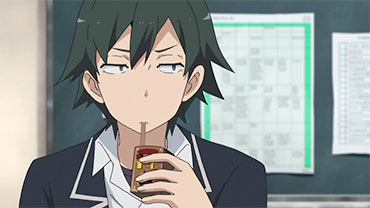
Surprisingly, this aspect of Japanese culture is not so obvious in anime except in situations where a school or work place is involved. Perhaps this is why “delinquents” are common in anime. Main characters like Naruto, Ichigo (Bleach), Haruhi (The Melancholy of Haruhi Suzumiya), Seiji (Midori Days) or Hachiman (My Teen Romantic Comedy) are labelled as undesirable and rebellious by the school system. These characters may be liked in anime, but they are rare in Japanese schools. It could be that a character that fits the status quo isn’t interesting to watch or that their popularity is a representation of wishful thinking on the part of the Japanese viewers.
A middle school teacher on a Live-journal forum mentions, “I think it’s fair to say that ‘delinquency’ in Japan can be what would be considered almost normal behavior by western standards”. Long or bleached hair, causing fights, wearing make-up (even lip gloss for girls in some cases), casual speech, wearing a uniform slightly incorrect, slamming doors or skipping classes (futoko) are commonly labelled as delinquent behaviors in Japanese schools.
This could explain why the character Asuka Langley Soryu is popular among the fans of Neon Genesis Evangelion. She is from Germany, an individualistic culture, thus she does not hesitate to speak her mind. Another form of delinquency in Japan are Yanki or bike gangs, akin to teen thugs. They are identified by tattoos, drug use and numerous piercings, but apparently this trend has been phasing out since the 80’s. This could explain why the yanki characters of Kyoko Honda and Arisa Uotani were present in the popular 2001 anime Fruits Basket, but have been rarely seen since.
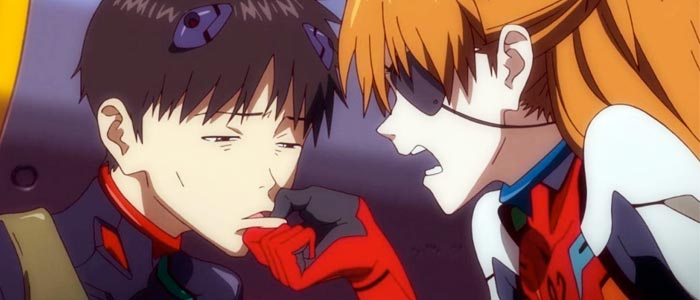
Thankfully most anime characters are half decent individuals so these sorts of interactions do not happen very often. Many of the cruel characters in anime display their dislike for others by developing a superiority complex, withdrawing from social interaction or speaking to others in a condescending tone, like Ginoza (Psycho Pass), Shana (Shakugan no Shana) or Levi (Attack on Titan). Some characters like Lelouch (Code Geass), Light (Death Note) or Lain (Serial Experiments Lain) resolve this moral dilemma by leading a double life.
Outside of a school setting the subtle snark of the Japanese is present in some anime. In episode five of Eden of the East twenty year old Saki is invited to dinner by some job interviewers as a way to say sorry for not getting the job. While eating, one of the girls ‘accidentally’ knocks the bowl of ramen over Saki’s clothes. Saki is incredibly upset about this and expresses to Takizawa afterward that the interviewers should have found a ‘nicer’ subtle way to express their dislike for her, rather than ruining her outfit.
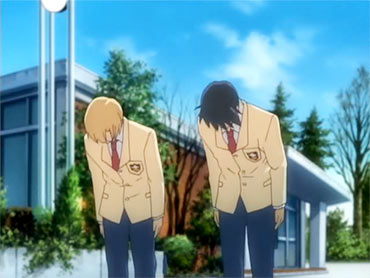
The nuances of Japanese interaction make the social skills of reading body language and facial expressions come in great use. Another custom to show respect in Japan is the use of bowing. Bowing is done in many different circumstances: as a greeting, thank you or apology, so one may bow multiple times throughout a conversation with somebody. The duration, speed and depth of a bow can indicate the amount of respect you are communicating to the other person. The type of bow one gives to another person depends on the circumstances and context of the interaction (Wright, 2015). This custom is used so frequently that it is immediately obvious to anyone who has watched anime. In fact, how and when to bow became so ingrained that I had no problem adjusting to this when I went to Japan in 2013. In fact, I got so used to it I had trouble not bowing at people when I arrived back home.
Another way that respect is showed in Japan is through the use of suffixes and name usage. It is only in recent years where anime dubbed versions have started to include the suffixes for character names such as ‘san’, ‘chan’ or ‘kun’, although it is very common for these to be omitted as it is a uniquely Japanese custom. There are plenty of anime adaptions where the suffix ‘san’, which indicates a superior (keiko, 2015), is replaced with “Miss” and “Mister” as that is the equivalent in English. ‘Sama’ is often translated to ‘lady’ or ‘sir’.
Another common topic for conversation in anime is the use of first names. In Japan everyone you meet is treated with respect, so initially one would address friends and work colleagues by their last name. It is only under special circumstances when a certain level of intimacy has been reached when permission is asked to use first names (De Mente, 2015). This is present in many anime, but explicitly in CLANNAD. Fuko remarks that Nagisa and Tomoya are so close they ought to be addressing each other by first names. As such, there is a cute moment where the two struggle to overcome their anxiety around the topic.
On the brief subject of schools it is easily apparent about the needs to perform entrance exams and also how the Japanese education system works, although many of the strict rules that can apply to expensive schools don’t often appear in anime.
Table Manners & Food

“The food [in Japan] is amazing. I can get sushi at the 7-11 that puts to shame a fifty dollar dinner in the U.S; none of those California rolls and week-old sashimi that people rave about in the States. Then there’s the restaurant I stop at after work, where everyone says “Welcome home, Seeroi-san.” It’s like my house, if my mom had been both Japanese and hated vacuuming.” – Ken Seeroi, Japanese Rule of 7.
The first lot of table manners one may notice is the phrase ‘itadakimasu’ before eating. This is often translated to ‘thank you for this food’ in English dubbed versions, which reasonably reflects the meaning (Kurihara, 2015), although in some early anime dubs the phrase was butchered. The worst cover up itadakimasu in a US adaption was in Digimon Adventure where it was changed to ‘It’s good to be home!’ Next, Japan uses chopsticks. This is common knowledge, although there are a number of rules on how to use them (Rodgers, 2015).
For example, one only uses the chopsticks to bring the food from the bowl into one’s mouth. Any unnecessary waving around, stabbing food or passing pieces between people is considered rude or simply inappropriate (Rodgers, 2015). You don’t have to look far to see this in anime, although the finer details of the etiquette are likely to be lost unless you are paying close attention. Another rule is that you can’t pour your own drink, but you are expected to pour everyone else’s. In anime, one has no doubt come across the exclamation of ‘kampai’ similar to the custom of saying ‘cheers’ in the West where glasses are clinked together. In Japan it is often done all at once as part of a circle (Wright, 2015). Eating ramen noisily is considered okay since it shows one enjoys it and it is considered fine to raise your bowl of food closer to your mouth so it doesn’t go everywhere (Wright, 2015).
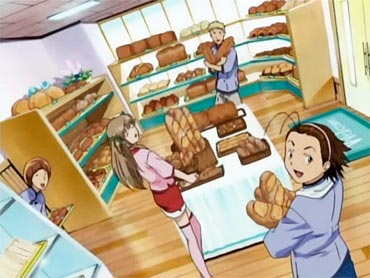
Then of course there’s the food that has inspired many to take the plunge into Japanese cuisine or take a stroll into their local Japanese restaurant. Beyond easy to find sushi or instant noodles, anime displays the wide variety of Japanese cuisine. It is a mystery as to why the majority of lead characters in anime are able to cook to exceptional standards. Mai Tokiha (Mai HiME) can apparently make amazing ramen, and the well-drawn artwork is very convincing. Goku and Naruto are big fans of instant noodles. However, the translation hasn’t always been faithful.
In Pokemon the names for onigiri and sushi were changed to “donuts” and “eclairs”, but dubbing practices are much better. Many Kyoto Animation characters have a favorite sweet: Nagisa (CLANNAD) likes red-bean buns and dango, Ayu (Kanon) likes taiyaki, and Shana (Shakugan no Shana) has a fondness for melon pan. Other displays of food are more generalized. K-On! characters eat cake nearly every episode. These are very easy to come by in Japan as there are stalls that sell slices of cake for around $2. Anyone who has seen Fruits Basket will know that the main character Tohru has a special fondness for onigiri as she is considered the odd one out when playing a children’s game.
Food is so important in Japan that some anime focus entirely on this topic. Food Wars is a recent series that has proven a popular combination of Master Chef-like drama, obscure anime-like eccentricity and fan service. Yakitate! Japan (2004) may be over a decade old now but it has remained popular in the genre. It focused on baking bread. The unique design and breads in Japan are displayed in anime where the character’s parents own bakeries, notably CLANNAD or Digimon Tamers.
These aspects of anime probably mean very little to the locals, but for Westerners they are an easy way to learn more about the cuisine. If the inclusion of food items are supposed to act as product placement they definitely work. One obvious example of using anime to market food is the UCC brand of canned coffee seen in Neon Genesis Evangelion. In order to gain the most in depth knowledge of table manners and Japanese foods, cooking anime are a safe choice.
Bath Houses
“Naked. That’s the only part of my local guide Moriwaki Michiko’s onsen explanation that I could catch. I would have to be sans clothes…with strangers. What if people stared? What if I brought the wrong towel or got naked at the wrong time? […] Upon sliding my shoji door shut I again I felt angry at myself. I was a fearless traveler. I skydived, bungee jumped and rock climbed. Why was I so afraid of taking a bath?” – Jessie Festa, Jessie on a Journey Blog.
Onsen, hot springs/sento and neighborhood bathhouses are an aspect of Japanese culture that is apparent in nearly every anime, but especially the romantic comedy ones. It is very common to find a filler hot springs episode among a television series. The only other competitor for this is the beach episode, and some anime even have both. It is so prominent in anime that there are many discussion forum debates on what the best hot spring episode is. Although Love Hina introduced many budding fans to the idea of bath houses as the entire series takes place in one, there are many more high quality anime that focus on them.
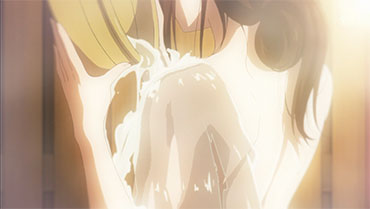
Full Metal Panic Fumoffu has one of the stronger uses of a hot springs episode. It combines comedy, action and plenty of awkward situations in one. If you want some fluidly animated censored nudity, explosions and guns Fumoffu is a fantastic option. Futakoi Alternative, while it is not licensed, also has a similar style hot spring episode with action, romance and even Beethoven’s 5th Symphony in C Minor. Also by Kyoto Animation, Hyouka had a more serious approach to the idea which worked incredibly well. Not only was it interesting because it deviated from the usual slapstick approach, but it included a touching discussion of family, and the main character discovers some of his attraction for the female lead, Chitanda Eru – which he subsequently represses. Maison Ikkoku‘s only inclusion of a hot spring actually marks the end of a story arc, in which the situation is balances humor, awkwardness and drama. All in all, it was still a memorable execution of the idea, rather than the usual throwaway excuse for fan service.
Aside from which hot spring episode is the superior one, does anime teach viewers about how to use bath houses? There is a very specific way to use an onsen and every one will have slightly different rules so it can be helpful to look for a sign. Generally, one uses soap and a small shower to wash before going into the bath, where one can soak to their heart’s content (Spacey, 2014).
In the West there are some families that ask that you wear slippers inside to keep the house clean, and it is a decent idea. This is always present in Japan, anime but the rule is especially strict in bath houses. The only time this does not occur is on tatami mats (Wright, 2015). They would be damaged if you wore any kind of footwear on them. Many, if not all of rules for using an onsen and entering houses are shown in anime but they are not explicitly stated so it can help to pay attention.
Festivals & Events
“…So we got to the festival and there was music and children laughing and all these Japanese guys carrying around giant wooden shrines and yelling, but all I could think about was food. Everywhere I looked there were food stalls. […] Amazing scents were wafting from every direction.” – Ken Seeroi, Japanese Rule of 7.
Matsuri, or festivals, happen all over Japan at multiple times throughout the year. They are usually organized around the shrines and temples in the area. Attendees wear costumes and carry mini shrines around. The term is also used loosely to refer to local events (Kawasaki, 2015), which may involve dancing or art. These are fairly easy to see in almost any anime. Similar to the hot spring episode, Hyouka deviates from the norm and used the New Year’s episode to further develop the bond between the two main characters. As such, levels of sexual tension are at amusingly high levels. The school festival series of episodes are also presented in an unconventional way. Fruits Basket‘s dramady New Years episode is particularly significant for adding detail to the main character. The real obvious cultural differences come when looking at Western and Japanese holidays.
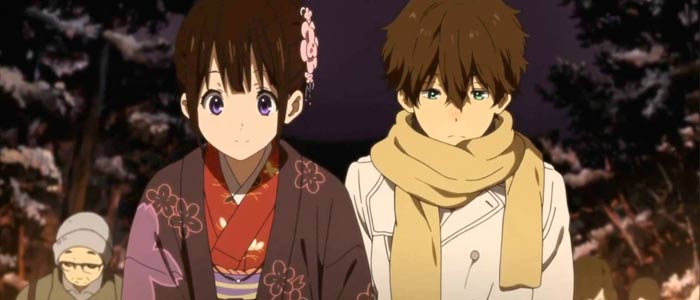
Valentine’s day has more variation on Christmas between Japan and the West. On Valentine’s Day the woman are expected to provide chocolates or other gifts to men, co-workers and friends. These are divided into different types depending on your relationship to the other person. Giri-choco means ‘obligatory chocolate’ and the name implies its role (Sharp, 2013). These are the standard, reasonably priced chocolates that you can afford to give to many people. It might be the ones you buy last minute in the confectionery supermarket aisle. Honmei-choco is the fancier chocolate you save up for to give to a more special someone, whether that is a crush, lover or close friend. Sometimes the girl may want to make her chocolate from scratch (Sharp, 2013). Some of the more memorable Valentine’s day episodes are from Fruits Basket, Toradora and (again) Hyouka.
While Easter has become adopted by Japan, it is still not known by most Japanese. Instead of relying on chocolate eggs, Japanese sometimes replace these with their own local sweets like mochi. A similar trend is seen with Christmas. In Japan the most common religions are Shintoism or Buddhism, with only 1% identifying as Christian (Hammond, 2006), so the celebration of Christmas has been adopted to focus on the spirit of giving. The decorations, cards and giving/receiving of presents are as far as the similarities go (Martin, 2011). For those in the West who are not religious this version of Christmas will not seem out of sorts. In Japan Christmas is an opportunity to dress up nicely and enjoy a romantic night out (Martin, 2011).
A more unusual difference is the commercial ploy from KFC in Japan. Because of their advertising eating fried chicken is a common practice at Christmas in Japan, with many families having to order in advanced (Hammond, 2006). Popular Christmas episodes for anime usually involve a plot or aspect of character development, like Maison Ikkoku, Toradora and The Disapearance of Haruhi Suzumiya film, although I have yet to see any KFC.
Halloween in Japan is a different, but still very exciting, beast to the West. The concept of ‘trick or treating’ has not ever, and probably will never be a trend because of Japan’s strong cultural focus on respect for others (Von Lanken, 2015). However, that doesn’t stop anyone from dressing up. In fact, judging by the Shibuya Haloween Street party of this year, Halloween could be seen as synonymous with ‘giant pop culture convention’ as far as cosplaying goes. While the differences in holidays vary to the Western counterpart, an even more alien variation are the social concerns in Japan.
Crime in Japan
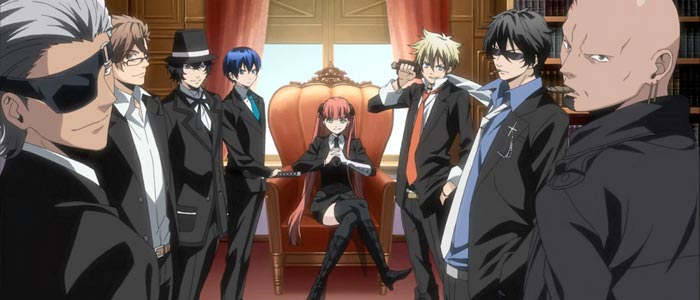
“A couple of minutes ago I was having a bunch of nice drinks with this chick, and now it’s like: what the hell’s going on? […] The skinny guy on the tile floor isn’t moving and this massive dude is just kicking the shit out of him. And I know immediately the big guy isn’t just an ordinary person. He’s a yakuza. […] There was blood everywhere. It wasn’t anything like a fight; it was like something from a war movie. I was like, Holy crap, this is an actual murder. The man in the purple shirt lay there lifeless with his eyes rolled back in his head, not even breathing, while all his dark blood poured out onto the white tile.” – Ken Seeroi, Japanese Rule of 7.
The crime rate is low in Japan and it is considered a very safe country (Wright, 2015), so much so that a decent proportion of crime in Japan comes from foreigners (Takafuji, 2015). Bicycles being stolen, home break ins or sex crimes are far more common. United Nations report stated that Japan’s homicide rate is one of the lowest in the world (Engel, 2014).
One possible reason for this is the gun laws which mean that everyone who wants a weapon needs a very in depth and vigorous background check (Engel, 2014). Kopel (1988) believes that the gun laws only partially contribute to the low crime rate, as the majority of crimes in Japan are from organized groups called Boryokudan or yakuza (Adelstein, 2015). Yakuza are immediately recognized by tattoos, so to the Japanese this is an immediate red flag (Goodmacher, 2013). The only time a tattooed person won’t be suspected as a criminal if it’s obvious you’re a tourist and not Japanese (Festa, 2014).
The criminal justice system is stricter than in the West. Being bailed out of jail will be denied if the suspect is still considered useful to an investigation, which heightens the confession rate to 95% (Kopel, 1988). Gangs are represented a lot in anime. The first one that comes to mind is Seiji Sawamura in Midori Days, although Heaven’s Memo Pad, K, La Storia della Arcana Famiglia, Great Teacher Onizuka and Black Lagoon are well known too.
Social Issues in Japan: Marriage, Sex and the Hikikomori
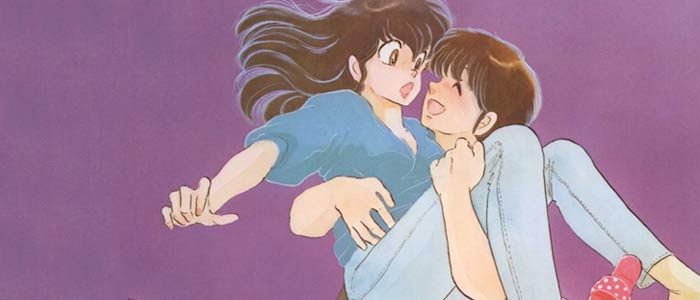
“I recently ran into a couple at a sakura flower-viewing party. They’d met through a matchmaker, and told me they were planning to get married. ‘I just got tired of being alone,’ said the guy. ‘I made up my mind to get married,’ said the girl. ‘So you decided to get married […] and then you met each other?’ They both nodded. ‘I think we do it the other way around in the U.S.’ – Ken Seeroi, Japanese Rule of 7.
Arranged marriages used to be incredibly common in Japan, usually organized by the parents or with the help of a matchmaker or ‘nakodo’. After World War 2 many Japanese rebelled against their parents and wanted their marriages to be based on love. As a result nowadays many parents strongly recommend a partner, allowing the man or woman to make the final decision (May, 2015). It’s a ‘choose or we choose for you’ mentality. However the miai appears to fluctuate in popularity depending on the circumstances of the country, as these types of marriages became more popular after the 2011 tsunami (Millward, 2012).
Since many anime take place in high schools marriage rarely becomes a subject topic, although it does from time to time. Maison Ikkoku presents this very strongly, almost to a Pride and Prejudice extent. In the 80’s a small portion of marriages were arranged, which makes sense in the context of the series. Many of the conflicts between Godai and Kyoko are a result of cultural and parental pressures which makes it an extremely interesting series from that aspect alone. Despite its highs, marriage popularity may be on the descent again judging from the number of Japanese people choosing to not be in relationships.
“Ah, sex in Japan, always a hot topic in online forums. If you’re a man, and you post: I’m having lots of sex in Japan! then someone will surely reply: The women you’re seeing are all hoes. Or, if you’re a woman and you post the same thing, then: You yourself are a ho. Okay, so the internet’s never been famous for politeness.” – Ken Seeroi, Japanese Rule of 7.
According to the Japan Times, 40-50% of marriages in Japan are sexless, and it isn’t just married couples that are avoiding it. Relationship counselors like Ai Aoyama are trying to tackle this lost interest in sex among Japanese men and women. It is often called sekkusu shinai shokogun, which means ‘celibacy syndrome’ (Haworth, 2013). It is difficult to gain an understanding of this situation from anime. Generally there are characters on either side of the spectrum, your typical perverted character (Brock from Pokemon, Ataru from Urusei Yatsura or Hideki from Chobits) and the apparently asexual (Oreki from Hyouka) or one that finds sexual situations highly embarrassing (Shinji in Neon Genesis Evangelion or Renton in Eureka Seven).
The Japanese Rule of Seven mentions that sex is so difficult to come across in real life that Japanese resort to prostitution, among other quick fixes. This explains the abundance of ecchi anime, even though Japanese come across as sexually repressed. Sex scenes themselves rarely appear in anime that isn’t hentai – the only ones I can think of are in Neon Genesis Evangelion and Gundam Seed. It all appears to be symptoms of a larger problem, one that Japan is trying very hard to fix as soon as possible.
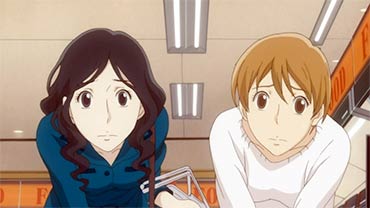
Aoyama’s patients often express dislike of the Japanese model of marriage and feel distressed for breaking from the norm (Haworth, 2013). The number of singles has risen dramatically not just in Japan, but other Asian countries (Seoul & Taipei, 2011). Aoyama believes this can partially be blamed on the typical marriage roles in Japan. The workplace hours can be so demanding that women often stay home to raise children while the father works.
In Usagi Drop very early on in the series Daikitchi works so late that the child care center has to wait with Rin outside in almost pitch black. It is a small window into the sorts of problems that come about with long work hours, twenty hours a day in extreme circumstances.
Although equality of women and men in the workforce is fairly even in the West, according to The Economist (2014) there are far less women who work in Japan. Many stay at home to rear children and rely on their husbands for income. This still happens in the West but it is more common in Japan, with 70% of women leaving work after their first child (Haworth, 2013). Perhaps a symbolic representation of this emotional lifelessness in Japan can be interpreted from this wedding between robots, the first of its kind, which took place in June this year.
On a lighter note, Japan issued its first marriage certificate to a lesbian couple earlier this year as well, showing that Japan does still believe in equal rights for those in love, even if many share very pessimistic views. It is rare to see these dynamics depicted in anime, again because of the focus on high school students. However, in Usagi Drop there is an episode where a mother is having a conflict with her husband and tells the main character that she regrets being married and felt that her childhood dream was too idealistic. The take away mesage of the episode is marriage is not all it is cracked up to be.
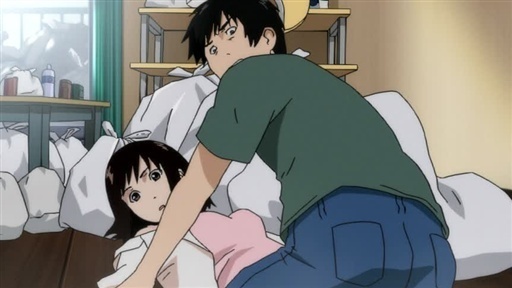
On my tour it was explained to me that the reason all windows in Japan can only be opened a small amount is to dis-encourage suicide and it is not unusual for trains to be delayed from someone jumping in front of them. Sadly, this happened a number of times on my trip. Another largely Japan phenomenon is the Hikikomori, sometimes known as NEETs (an acronym coined in the UK to mean Not in Employment, Education or Training). These are a portion of Japanese youth that have withdrawn from society to such an extent that they won’t leave their room or house for a period of longer than six months, sometimes years – except for at night to the convenience store.
Japan and other researchers in the world are trying to find ways to formally diagnose and treat hikikomori, as the symptoms appear independent to social anxiety (Wang, 2015). There are support groups and a call crisis center available as free treatment options (Wang, 2015). However, it is thought that the condition may cross over with other personality disorders and could be brought on by attachment theory or a failed resolution to an identity crisis. Cultural factors, such as over-supportive parents are thought to be a factor as well (Li & Wong, 2015).
The most in depth and deliberate exploration of the Hikikomori is in the hit show Welcome to the NHK!. Every character in the series is some representation of otaku, sexually repressed, hikikomori or all three. The reasons behind this are explored to differing extents depending on how important the characters are. The series reaches the highest highs and the lowest lows, especially in its mid series arc that brings the issue of group suicide and drug use. The show is an entertaining one in its own right.
While many in the West may be able to relate to the expressions of social anxiety and depression, the show is made all the more relevant with this social context. In a similar vein Eden of the East touches upon the issue of NEETs although it is not done with as much sympathy and care as Welcome to the NHK. While Welcome to the NHK portrays its characters as one might a loving friend who wants to help, Eden of the East is a harsh parental voice which has very little encouraging to say. Regardless of the approaches used to display the message, the cultural issues in Japan are the well represented in specific anime like Maison Ikkoku, Usagi Drop and Welcome to the NHK respectively.
There are other aspects of Japanese culture which are so rarely depicted in anime it would not be worth dedicating a whole paragraph to them. One is the idea of the Jazz kissaten, a coffee shop dedicated to playing jazz, and jazz bars in a similar vein (Downey, 2014). These became popular in the 60’s because music records were so expensive that students and those working would spend time in these locations just to listen. This focus on Jazz is displayed in the anime Kids on the Slope.
Hygeine is another concern of the Japanese which is apparent to anyone who has witnessed the spotless streets of Osaka or Hiroshima (not so much Tokyo). Japanese are expected to still go to work and school when sick, so they wear face masks as to prevent the spread of germs. Since anime characters don’t usually get sick these are not shown in anime very often. The Disapearance of Haruhi Suzumiya film is one instance where it is displayed.
There are many aspects of Japanese culture that become automatically ingrained in regular anime watchers by mere repetition, like bowing, uses of names, hot springs and some table etiquette. The specifics of some of these rules are difficult to gather without doing further research, although anime gives a decent introduction to many of these cultural differences.
The more complicated social issues require deeper research to understand, but can give an extra layer of enjoyment to anime one may not have had before. Anime is an important medium for understanding and sparking interest in Japanese culture and hopefully it will continue to inspire fans for years to come.
Works Cited
Abe, N. Easter and Chocolate. Retrieved 9th November 2015 from: http://japanese.about.com/od/namikosbloglessons/a/lesson12.htm
Adelstein, J. (2015). The yakuza: Inside Japan’s murky criminal underworld. Retrieved 7th November 2015 from: http://edition.cnn.com/2015/09/15/asia/yakuza-yamaguchi-gumi-explainer/
2011. Are there really yankee schools in Japan? Japan Guide forum. Retrieved 9th November 2015 from: http://www.japan-guide.com/forum/quereadisplay.html?0+87037
2014. The Gender Gap in Japan [Youtube video]. The Economist. Retrieved 7th November 2015 from: http://econ.st/1hj2rqF
De Mente, B. L. (2015). Etiquette Guide to Japan: Know the rules that make the difference! (3rd ed). Tuttle Publishing.
Downey, T. (2014). How Japan Copied American Culture and Made it Better. Smithsonian Magazine. Retrieved 7th November 2015 from: http://www.smithsonianmag.com/travel/how-japan-copied-american-culture-and-made-it-better-180950189/?no-ist
Engel, P. (2014). How Japan’s Murder Rate Got To Be So Incredibly Low. Retrieved 7th November 2015 from: http://www.businessinsider.com.au/why-japans-murder-rate-is-so-low-2014-4
Festa, J. (2014). Culture Shock: My First Onsen Experience In Japan. Jessie on a Journey. Retrieved 10th November 2015 from: http://jessieonajourney.com/onsen/
Goodmacher, G. (2013). The Seven Best and the Worst Experiences of a Hot Spring Addict in Japan. Retrieved 10th November 2015 from: http://www.expatsblog.com/contests/304/the-seven-best-and-the-worst-experiences-of-a-hot-spring-addict-in-japan
Hammond, B. (2006). Christmas in Japan. Retrieved 9th November 2015 from: http://tanutech.com/japan/jxmas.html
Haworth, A. (2013). Why have young people in Japan stopped having sex?. The Guardian. Retrieved 9th November 2015 from: http://www.theguardian.com/world/2013/oct/20/young-people-japan-stopped-having-sex
Hoffman, M. Married or single, Japan is a desolate country. The Japan Times. Retrieved 9th November 2015 from: http://www.japantimes.co.jp/news/2013/08/31/national/media-national/married-or-single-japan-is-a-desolate-country/#.VkAupLcrLcd
JC. (2013). Understanding The Asian Concept of “Saving Face”. Retrieved 7th November 2015 from: http://www.tokyo-foreigners.com/living-tips/understanding-the-asian-concept-of-saving-face/
Kawasaki, K. (2015). 10 Popular Japanese Festivals. Retrieved 9th November 2015 from: https://www.tsunagujapan.com/10-popular-japanese-festivals/
Keiko. (2015). Japanese Honorific Suffixes Part 4. Japanese Language Blog. Retrieved 9th November 2015 from: http://blogs.transparent.com/japanese/japanese-honorific-suffixes-part-3-2/
Kitty Noir. (2012). Delinquency stereotypes in Japanese middle schools? Livejournal. Retrieved 9th November 2015 from: http://little-details.livejournal.com/3170954.html
Kopp, R. (2010). Saving face: A little discretion can go a long way in Japan. Japan Intercultural Consulting. Retrieved 7th November 2015 from: http://www.japanintercultural.com/en/news/default.aspx?newsID=59
Kurihara, J. (2015). Why Japanese say Itadakimasu together before they eat? Retrieved 9th November 2015 from: http://www.iromegane.com/japan/culture/why-japanese-say-itadakimasu-together-before-they-eat/
Li, T. M. & Wong, P. W. (2015). Youth social withdrawal behavior (hikikomori): A systematic review of qualitative and quantitative studies. Australian and New Zealand Journal of Psychiatry, 0004867415581179.
Martin, M. (2011). The weird? Christmas in Japan. Japan Monthly Online Magazine. Retrieved 9th November 2015 from: http://japan-magazine.jnto.go.jp/en/1112_christmas.html
May, J. (2015). Matchmaking in Japan. Japan Visitor. Retrieved 9th November 2015 from: http://www.japanvisitor.com/japanese-culture/match-making
Millward, D. (2012). Arranged marriages make comeback in Japan. The Telegraph. Retrieved 9th November 2015 from: http://www.telegraph.co.uk/news/worldnews/asia/japan/9206205/Arranged-marriages-make-comeback-in-Japan.html
Seeroi, K. Crime in Japan. Japanese Rule of 7. Retrieved 7th November 2015 from: http://japaneseruleof7.com/crime-in-japan/
Seeroi, K. My Very Brief Fight with a Yakuza. Japanese Rule of 7. Retrieved 10th November 2015 from: http://japaneseruleof7.com/my-very-brief-fight-with-a-yakuza/
Seeroi, K. The 9 Best Things about Japan: Also known as, “Why on Earth am I Still Here?”. Japanese Rule of 7. Retrieved 9th November 2015 from: http://japaneseruleof7.com/the-9-best-things-about-japan/
Seeroi, K. The Japanese festival I never saw. Japanese Rule of 7. Retrieved 9th November 2015 from: http://japaneseruleof7.com/the-japanese-festival-i-never-saw/
Seeroi, K. The truth about sex in Japan. Japanese Rule of 7. Retrieved 9th November 2015 from: http://japaneseruleof7.com/sex-in-japan/
Seeroi, K. Who wears the pants in Japan? Japanese Rule of 7. Retrieved 10th November 2015 from: http://japaneseruleof7.com/japanese-women-and-work/
Seoul & Taipei. (2011). The flight from marriage. The Economist. Retrieved 9th November 2015 from: http://www.economist.com/node/21526329
Sharp, G. (2013). Celebrating Valentine’s Day in Japan. Retrieved 9th November 2015 from: http://thesocietypages.org/socimages/2013/02/14/celebrating-valentines-day-in-japan/
Spacey, J. (2014). 7 Things You Need to Know Before Going to a Japanese Onsen Bath. Japan Talk. Retrieved 9th November 2015 from: http://www.japan-talk.com/jt/new/7-things-you-need-to-know-before-going-to-a-Japanese-onsen-bath
Takafuji, K. (2015). NPA: Violent crime by foreigners on the rise in Japan. Retrieved 7th November 2015 from: http://www.tokyoreporter.com/2015/09/29/npa-violent-crime-by-foreigners-on-the-rise-in-japan/
Victorian Transcultural Psychiatry Unit. Key Characteristics of Collectivist cultures Individualist Cultures [PDF]. Retrieved 9th November 2015 from: www.vtmh.org.au/_literature_37618/values_slide_pdf
Von Lanken, K. (2015). Halloween in Japan: What’s different? What’s not? Retrieved 9th November 2015 from: http://blog.gaijinpot.com/halloween-in-japan/
Wang, S. S. (2015). The Fight to Save Japan’s Young Shut-Ins: A City Reaches Out to Its Hikikomori Population; Some Stay Inside Their Homes for Years. The Wall Street Journal. Retrieved 9th November 2015 from: http://www.wsj.com/articles/the-fight-to-save-japans-young-shut-ins-1422292138
Wright, T. (2015). 10 customs you must know before a trip to Japan. Retrieved 7th November 2015 from: http://matadornetwork.com/abroad/10-japanese-customs-you-must-know-before-a-trip-to-japan/
What do you think? Leave a comment.




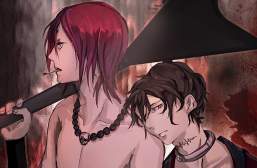
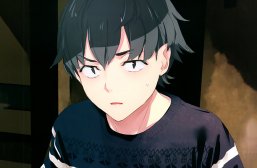

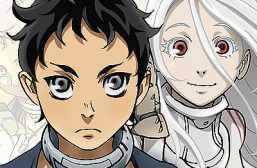
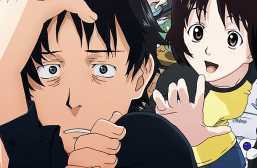
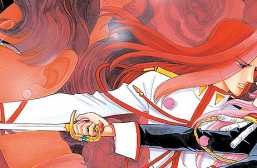
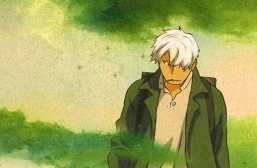
Jordan, this is a wonderful exploration into Japanese culture, especially for me. I have learned a great deal of expressions and sensitivities. I appreciate all of your research and that you shared it with us all.
Thank you, Venus. It’s so nice to hear you learned a lot from the article.
I think you’ve hit the nail on the head pretty much perfectly here. Great post. As someone who has been a long time anime fan and is now spending most of the year in Japan, I can understand a lot of what you’re writing about here.
I would love to get into Japanese food, but unfortunately I’m a vegetarian.
But vegetable yakisoba is delicious!
Actually, I think a lot of Japanese food is vegetarian; at least I remember a lot of rice, noodles, soups, and cooked vegetables. And if you don’t count fish as meat, then there shouldn’t be any problem.
It is very easy to be vegetarian in Japan. I wouldn’t worry about it.
Actually, as a vegetarian who lived in Japan for many years, Japanese people do not care for vegetarian food, barely know what is a vegetarian, and 98% of restaurant do not have vegetarian options.
Japanese food as prepared by Japanese people is really not vegetarian friendly. They will add meat, meat or fish stock etc to any food that does not contain meat because they think otherwise it misses something. In the greater Tokyo, for a megalopolis of 30 million inhabitants, the numbers of vegetarian/vegan places is ridiculously low. Basically, you need to speak Japanese to sometimes negociate. Or just eat bland white rice. Or just starved (50% of my food life there). The only thing that saved me were Indian restaurants xD
Sorry to break the dream…maybe in a couple of years it’ll evolve. Or you can cook veggie Japanese food yourself!
Ps: also, Japanese food isn’t as healthy as people believe :/
I think generally the stereotypes and things you see in anime are based off a lot of truths. Though they are mostly exaggerated.
They are exaggerated because anime is art and this is what art does. It distorts reality and it shows us things that we usually can’t see with our “naked eye”. Things that we would rather not see or feel and truths that we would rather not talk about and away from…
My Japanese class in high school did a two week trip to Japan in my junior year. We visited a high school in Kyoto for a few hours one day and got to sit in on their English class. It’s not that far from the anime interpretations from what I remember. There was a definite lack of magical transformations and giant mecha, and no one had crazy hair. The stereotypes presented in some slice of life anime were certainly there. I got to arm wrestle a kid with a totally shaved head for national honor. I guess my view was a little skewed though, I was really enamored with Japanese culture (and cute Japanese girls…) at the time, but it really seemed like everything I had imagined it to be while watching anime. Also walking into their gym class and having all the girls start flipping out over how tall you are ( I was 5’10” at the time) was pretty sweet.
I feel that anime is a parody on Japanese culture.
That, or an exaggerated version of Japanese culture.
I used to think that until I went to Japan…Life there can be as ridiculous as in animes, especially in regard to dating. I don’t know if it is because Japanese people mirror anime behaviors, or the other way around…
I love Japanese manga and anime my favorite is deathnote.
I’ve just developed a huge appreciation of anime. I saw Akira years ago and loved it. Then a few nights ago I watched Ghost in the Shell and it blew my mind. Today I watched Perfect Blue which was also really good. Does anyone have any recommendations for what to watch next? I’m more interested in the futuristic urban stuff than the fantasy stuff.
Battle Angel Alita, Jin-roh(same director as ghost in the shell) Macross do you remember love. Macross plus. Cyber city oedo, Redline, mardock scramble,pat labot, robot party, you said you liked perfect blue? I recommend tokyo god fathers, and paprika(done by the same director) He also made a series called paranoia agent i highly recommend it.Royal Space Force: The Wings of Honnêamise, any thing by studio ghibli, and metropolis. I sure you’ll like at least some of those.
Try; Time of Eve, Nerawareta Gakuen, “hack// The Movie Beyond The Wall”, Colorful, Kowarekake no Orgel English Subbed, The Place Promised in Our Early Days, and “HAL ハル (Haru Animation) ENG sub”.
Recommended series; Ergo Proxy, Melancholy of Haruhi Suzumiya, Welcome to NHK, “Myself; Yourself”, Great Teacher Onizuka, Gokusen, “Beck Mongolia Chop Squad”, No. 6, Honey and Clover, Mushishi, and xxxholic. I don’t know how you will react to all of these animes but I suggest you try giving the movies 8- 10 minutes and watch at least the first episodes of my recommended series to see if they are to you liking since these are my personal favorites so I hope you will like some as well.
Hi Jeremy. I wrote a post about “Anime for Mature Audiences” you may like to read.
Anime in Japan is very comparable to western comic book culture.
Then it comes to the culture of Japan. I would love to know Japan’s past. I want to see what happened there instead of America for once.
Woow! Thanks for creating such a great resource!
To be extremely honest, I dislike when people ask me why I’m interested in the Japan. It’s true I’m interested in it because of the culture and I just find it fascinating…. but it’s also true that one of my main motivating factors is because of anime and manga. It makes me extremely embarrassed to say this for fear of being judged and looked down upon.
There’s no shame in that. If others have misconceptions about anime, saying that you like it is an opportunity to break myths. On my trip to Japan I said I was really interested in anime, and that prompted a number of others on the tour to say they liked anime too.
Anime and manga has made a big impact in my life. However, even when I was first finding out about anime and manga (not to say I didn’t read or watch it before, I just didn’t know what it was I was reading/watching) I knew that anime fans in America are very much looked down upon. I’ve always thought it was a little unfair but I supposed I could understand where they were coming from seeing it as a shallow thing.
Great work on the very detailed research of Japanese culture. Admittedly, I didn’t know most of the facts, so this taught me something. I found the section on marriage particularly compelling.
A well researched and detailed posting. Good stuff 🙂
This was really great! You really covered a lot of bases with this article. Though I did have one comment.
In the article, you said that trick or treating probably won’t take off in Japan. However, in one episode of Osomatsu-san (a somewhat lesser known Fall 2015 anime), the main characters are seen trick or treating, leading me to believe that it at least sometimes happens in Japan. Although, it seemed that the characters in Osomatsu-san had a pretty warped view of what “trick or treating” actually was (they end up taking everything in the guy’s house).
I think what happens in anime would be different to real life, but it probably isn’t completely out of the question.
this could also impy that anime is made to have similarities with country’s in the west.
Very insightful article about Japanese culture. In regards to culture, I am always interested about food and festivals in particular. Nice job!
Wow, what an interesting, in-depth article! On the note of Trick-or-treating that I notice is mentioned in the comments as well, I read in the newspaper that there are in fact some areas of Japan that trick-or-treat, but oddly enough it is often Yakuza who pass out candy.
Also, as someone who is part-Japanese and has studied in Japan for the last four months, I can tell you Japan is a very safe country. They have very low petty crime rates, but when crime happens it’s often the truly horrific, Silence-of-the-Lambs-bizarre kind.
I have often made the observation that anime fans appear to somehow get the idea that Japan is made up of dyed hair, small skirts, everything pink and edgy and kawaii, while in fact it’s a relatively conservative place (don’t wear shorts on the subway, you’ll get stared at). You broke away from that perceptions really nicely in this article.
I think the reason why we may be easily influenced and create this desire to know more about Japan is because we are around anime so much. Especially the way anime portrays, to an extent, the culture and language. My interest has extended as far as wanting to visit the country and trying it’s foods. Not so much learning the language.
I’m interested in Asian culture and mythology in general, so naturally I became fascinated with Japanese folklore.
Great post Jordan!
One that come to mind is, Sazae-san. It’s based off a manga made in like the 1970’s about a wife and her family. I’d say it portrays traditional Japanese life pretty damn well.
Ghost in the Shell.. in about 50-100 years
Usagi Drop is great.
My anime-otakuness led me into occassional looks at the real Japanese culture but I’ve never gone very deep.
Anime only portrait the lazy, crazy, non-productive part of Japan. They are serious at jobs, even part-time, also the pressure from school work. These are often ‘censored’, well just like other entertainment shows.
I think anime represents Japanese culture to an extent and it also depends on what anime you we’re talking about as well. You have to keep in mind that Anime is made so people will enjoy watching it and a lot of the time, the audience is the people of Japan. So I feel that it does represent culture pretty well, as in who is consuming Anime.
Great piece fellow anime lover.
I’m an Anime/Light Novel/Manga fan and this is a greatly researched article.
It is true that we can see this represented in anime, the only problem is knowing to what extend it is being represented. We don’t see Hikikomori very often. Gaijin Goombah did a great episode on the culture of Hikikomori.
I wish we could take a few pages from the Japanese book as far as how children are taught to act in school and also violent crimes..
Loved the post. I have recently gotten into Anime and this post has made the shows even more interesting. I guess I might have to pay more attention to some of the episodes.
Anime definitely got me more interested in Japanese culture. 😀 I actually don’t watch anime as much any more and have pulled away from a lot of the fandom stuff, but it’s still a hobby of mine.
I was interested in Japanese culture before I started watching anime (I even took judo as a kid for several years before I watched anime beyond Digimon.) I will say that anime led me to take Japanese in college. I had to take a language anyway for at least three years, and since I was sick of Spanish and really wanted to watch anime without subtitles, I went for Japanese. Now I originally entered as a history major (my other major passion), and studied medieval European history. After taking Japanese and a few culture courses, I decided to do a dual degree in History and East Asian Studies.
This is nice, thanks for the read.
There’s a very big difference of how someone visiting sees Japan (OMG so awesome!) and someone that’s living in Japan since birth sees Japan (Tokyo is a shitty cold lonely place).
Definitely. I wouldn’t want to live there because of the work hours and language barrier, but if it wasn’t for that I would be fine.
Anime is an good incentive for people to get inspired to learn more about Japan.
Watching Sazae-san or reading a business manga or at least a really mature manga aimed at salarymen gives an accurate portrayal of Japanese culture.
Let’s see here. i read alot. i read fiction, non-fiction, memoirs, whatever
and i read about japanese culture.
from what i understand, it seems that some deeply embedded cultural norms are:
honoring family and community
self-sacrifice
humility
obligation
harmony
avoidance of conflict
ritualized gift giving
etc.
These very traditional values may or may not hold true in modern japan, i have never been there and I’m pretty sure there would be a bit of culture shock.
I`m getting used to depth of analysis and the tough research on this website. Perfectly done as usual.
This is very well written article. Good work on the in-depth research.
I definitely got interested in Japan after getting into anime, and now I’d love to live there (maybe just for a few months at most, though). When I went to Japan in the past it was often not necessarily a true interest in the country and culture itself, but more like “wow I saw this in anime!”. I suspect that it’s the same for a lot of people. However, I’ve taken up studying Japanese at uni, so I suppose now my interest has become more sincere.
The majority of things in anime (especially clannad) are relatively similar to actual Japanese High school activities.
A good majority of those slice of life series depicts the Japanese kids as being happy go lucky slackers who don’t give a damn (K-On girls with their cake, Seitokai no Ichizon girls throwing everything to that guy…). That is the complete opposite of a culture well known for crazy work hours and crazy hours spent on club activities/cram schools.
Definitely! The lazy ones are the students everyone frowns upon.
For us in America the category for anime is crazy broad.
I live in Japan now, and while anime is very popular, the fantasy is a little different. Everyone here has an anime they like or liked as a kid. Everyone. My forty year old friend loves gundam, and plays gundam phone games all the time. The thing is, he won’t talk about it unless you bring it up. I think that is the mindset over here. Unless you know someone likes the same show as you, you won’t really talk about it.
Normally I’m a lurker when it comes to posting but… I’ve been reading over some of the articles on this site and I have to say one thing has impressed me above all else. The general tone of positivity and encouragement. I think this site is just what I needed to find to re-motivate myself into actively studying again!
That’s fantastic, Daren! It isn’t every day I inspire someone to study. Thank you for sharing your thoughts and best of luck with it.
Love this. My entire perception of what Japan is comes from Anime. It’s good to know what I’m actually being told.
Many signs in Japan are actually in English and have American references. A friend and I were a little surprised one day when, in Machida, we rounded a corner and found ourselves standing in front of a huge billboard mentioning our home city. Lots of the signs were in English, which was really handy.
I suppose because most Japanese learn English, and to help with tourists they have English signs everywhere. I found translated announcements on the trains especially helpful.
We’ve learned a lot about Japan from different type of anime but your best bet of finding a realistic portrayal of Japan is probably in manga, mature manga. (“I am a hero” for example. yes its all apocalypse and zombies and stuff but there is a strong underlying sense of Japanese society/cultural mindset that feels very true).
I’m taking a Sociology class and for my term project I decided to focus on Japanese anime and how well Japanese anime represents Japanese culture. I’m definitely going to reference this article. Thank you.
it was so interesting i learned so much super great job!!
I’m happy that this article exists.
I started studying Japanese because I liked anime which then turned into manga and listening to theme songs of anime on Youtube which then turned Vocaloid which then turned into random other videos on Youtube which turned into “Hey, I should learn Japanese so I understand all of this,” which turned into me going to Japanese restaurants and eating sushi and other food, which eventually turned into talking about everyday things with penpals, especially differences in our cultures. In Japanese. I’ve learned a lot of cultural bits and pieces out of pure curiosity since I started studying a few years ago.
If you analyze each anime’s underlying themes, social motifs, etc, I’m sure you can pick up some information about Japanese culture.
The truth is Japan is Western Culture with some pre-WW2 influences, Without the Western World Japan would not be what it is today (third wealthiest nation in the world). But Japan is not Global culture people from India & parts of Africa probably wont understand it. I guess people feel that Western Culture is global culture because they took over & killed off the Native people of the Americas/Australia. So since Westerns have control over Japan/& 4 continents its global(its not)
I like anime and manga, but I also like visual novels.
Great article. I’ve always felt somewhat more knowledgeable about Japanese culture because of anime, but not enough to be comfortable possibly visiting there. Your research is very helpful, and I feel more learned because of it!
I used to be an active member of the Japanese music room on the P2P program SoulSeek, which from what I remember, lost a significant amount of its membership. It was one of the few places where people were at least somewhat open-minded about J-culture, but it was dominated people who were really cruel and nasty. Thing is, I was one of them and was paranoid of weeaboos because I felt they were often promoting stereotypes about Japan in terms of why they liked it that were culturally untrue. I didn’t want the culture entirely misrepresented as a fan but at the same time I was going into an anti-Japanese phase and adopting the stigma of the members who were also into this mentality. I still stand by some of my views about the misguided notions some people have about Japan.
I think the Japanese culture in terms of anime and manga is very embraced and accepted in west. It wasn’t so much maybe ten years ago, but it’s very much so nowadays.
To someone with vague impressions of the Anime phenomenon, I have seldom come across anime without the extensive influences of the Japanese cultures, just as specified in this piece. This definitely peaked my attention to the realm of Anime, and I wonder about the variety of content that is created under the genre. Have you written some sort of entry-style article to the Anime world? I would be curious to see the kind of narratives and story-telling elements in the play a huge part of the Anime spectrum, if you have written it already, or perhaps plan to? This is an incredibly fascinating style of entertainment; I can appreciate the vast popularity it has.
Hi ND, thank you for your great feedback. It’s nice to see I’ve peaked someone’s interest. The first two articles I wrote for the site are “Do You Not Get the Anime Scene?” and “8 Genres Unique to Anime” which are very simplistic in comparison to this one, but it is a starting point. You may also be interested in “Anime for a Mature Audience”. That article is enormous, but it is a good resource to refer to. I hope this helps! Just Google the article names with ‘The Artifice’ on the end.
Thanks a lot for taking the time for reply, and I look forward to anymore that you have to offer in your writing. Best regards!
I remember the first time I heard Japanese was from “Dead or Alive” on the Dreamcast. I was in 5th grade. From there I heard it in anime and songs. I started to get curious about this beautiful language. That’s when I began to read about the culture and its people. Video games and anime was what sparked the interest, and I don’t think I would have gone through this wonderful journey if I hadn’t been exposed to it.
Based on what I have read on Japan, and what my father has told me about Japan during the time that he was stationed there when he was in the military, I can state that this is quite an accurate picture of Japan, and its cultural tendencies. I am not exceedingly familiar with the newer aspects that you put forth, but none of the newer features of Japanese culture surprise me; but the older aspects are most certainly spot on. This article, beyond being a guide for Japanese culture, also seems to be a guide for the subtler cultural aspects shown in anime (I say seems, because I am not terribly familiar with the genre).
I grew up with anime and I’ve learned several things about Japanese culture from it. However, I did get to travel to Japan last year and experience the unique culture for myself.
Interesting article. Would be cool to see someone do the same with American cartoons and comics as well.
I think someone from a different cultural background would have to write it. US culture perpetrates all over the world so I don’t think I could write it and make it seem authentic, but thank you for the suggestion.
“There are plenty of anime adaptions where the suffix ‘san’, which indicates a superior (keiko, 2015), is replaced with “Miss” and “Mister” as that is the equivalent in English. ‘Sama’ is often translated to ‘lady’ or ‘sir’.”
I think “san” is a suffix showing the person who is calling this name is somewhat familiar with the person being called. “Sama”, by contrast, is the one that shows respect to a person with superiority, or to show admire towards the person being called. Servers will call their master name+”sama”
Interesting article! I have learned a lot from anime and manga about Japanese customs and it helped with my perspective of how Japan is like. I also have read a huge guidebook about Japan because I was interested and I wanted to know more about Japan- and it did taught me a lot about Japan!
This was an excellent article. My first anime was Yu-Gi-Oh (a slightly embarrassing disclosure – but my 4th grade self has no regrets), but as I moved on and expanded my horizons, I came across Inuyasha; which very quickly introduced me to the Japanese culture, and sparked my intense fascination with it. From then on, one of my favorite aspects of watching anime became seeing the portrayal of the culture. Learning as much as I did from these so-called “cartoons” (as my family used to call them) not only sparked my interest in learning about Japan, but also about the whole world. I absolutely love that there is more to watching anime than what outsiders know about it, and it’s one of the reasons why I try so hard to get people to give anime and the Japanese culture a time of day.
Yu-Gi-Oh! wasn’t my first anime (that honor goes to Sailor Moon), but it’s definitely the first that I REALLY enjoyed. Even with the 4Kids wreaking havoc on the original script, just the crazy hairstyles and characterizations still gave off a foreign feel, not Japanese as much as Egyptian, but it definitely was my gateway show into anime.
Great article! Describes a lot of the culture.
I always thought that anime did in fact teach me a lot about Japanese culture and it’s good to know that I did learn something from watching hours upon hours of anime that I could actually use if I ever did go to Japan. Also, I have always been curious about the Japanese school system and the part about the behavior of the students was really interesting to me. It’s amazing how different the students in Japan act compared to the students of the West.
I feel like I’ve learned a lot about culture and their mythology (although some of the times i suppose ive been led astray.)
Loved it. Anime is a great medium for people to understand such a complex society as the Japanese. However, can’t help but feel like this reads more like an essay than an article. Nevertheless, great job!
This piece really speaks to my own thoughts whenever I watch anime! It’s like you mentioned too, It’s pretty amazing how much you can learn just by watching episodes of anime characters in their subtle nuances of bowing, addressing each other politely, or how to even hold chopsticks the right way. Anime has really taught me the quiet and gentle culture that is Japan. Loved your article!
An alternative reading of anime in the West is worth advancing. I don’t dismiss the study of cultural products within the fields of education, anthropology, sociology, and business; after all, anime and manga are part of a soft power political strategy by the Japanese government (e.g., just see Yokoso Japan! or Cool Japan!). But to attempt understanding of an entire people – and a living population – through the examination of a cultural product is a dangerous essentializing. An American in many parts of the world may balk at questions about expensive cars and gun ownership and rampant sexuality and more, and do so because exported media portrayals and cultural products overwhelmingly and popularly depict Americans as caricatures in action movies and romcoms. When Westerners do this sort of examination, scholars point to the ongoing, deeply problematic Orientialism. The primary binary (based on scholarly and critical response) in watching the aptly-titled Sophia Coppola movie *Lost in Translation,* for instance, is whether the viewer is the Westerner, observing the exotic Oriental, or the viewer is the subject of the Western gaze. As the comments for Jordan’s article embody, there is a disconnect between anime consumption and any substantial knowledge of Japanese history, language, or culture (just, as I have noted, there is when the world consumes American pop movies and pop music). That disconnect is derided, and the Japanese word /otaku/ and its original meaning have taken on an entirely new linguistic function – to demark the obsessive Western anime/manga/Japan fan who is altogether ignorant of Japan. Ripe for broader cultural shaming, particularly from a more socially aware, leftist, and humanist perspective, the problem has been blasted in a variety of ways, from *South Park* to biting skits on *SNL* (e.g., http://www.nbc.com/saturday-night-live/video/j-pop-talk-show/n13243 and http://www.nbc.com/saturday-night-live/video/j-pop-talk-show/n13307).
Jordan’s article is clearly worthwhile and her anime knowledge is truly impressive. We might do well to ask, however, if anime has a didactic function outside of promoting an intense, esoteric fandom and tourist base.
The history of jazz is so interesting to me… We just read James Baldwin’s “Sonny’s Blues” in class and extensively discussed jazz’s relationship with drugs (as a ‘necessity’) and its African roots. I find it really intriguing that it was big in Japan, despite emerging from a vastly different culture. Presumably it came from the post-WWII occupation?
Jazz, man…I have to do more research on it, ha.
So you’ve seen 10 anime in your entire life and you’re obsessed with two – NHK and Neon Genesis. Wow. How informative.
such an amazing and informative article.. i would like to refer to your article for my assignment and quote your words.. is that possible?
This is such an interesting read!
I agree with so much of what was written in this article! I have created a picture of Japan in my head from all the anime I have watched, where it is a land of rich culture, tradition combined with a lot of crime, violence, and sex. A few more points I would like to add:
1) Over- Sexualisation of Women: In my younger years, I believed that Japan is a country filled with men whose sole purpose is to have sex with as many women as possible and that women in Japan are all big breasted beauties. However, I have since discovered that there is more than just one form of beauty.
2) Misogynistic society: In most anime, women are depicted as side characters, who are weak and need the help of the male protagonist to succeed. With lines like “But you’re a girl!” or ” How typical of a woman” casually thrown around, it appears as though Japan is a country steeped in misogyny and unfair standards for gender. Also, the abundance of schoolgirls in short skirts, perverted old male characters and maid cafes make me feel as though objectification of women is something quite common in Japan,
However, these are just things I’ve gathered from watching anime or reading manga. It need not be a true reflection of Japanese society.
I really enjoyed this article. I loved how you gave context to a lot of the cultural aspect of tropes of animes. It always bothered me how a lot of people tried to copy the ideas in anime with no real understanding why characters act the way that they do. It always seemed awkward when you had a western character acting in a way that most westerners would not behave normally.
Really into Japanese anime. After mountains of anime, I even know a few Japanese words. That makes me want to learn the language. It must to say, it is another successful way for the culture output. My top 2 sites for these new anime are mydramalist and nihofun.
This article is really good. Upvote!!!
Studio Ghibli’s movies also give glimpses into Japanese culture. Take Ponyo and My Neighbour Totoro – we get to see bowing, traditional food, and a common bath.
Although the “chan” and suffixes I first saw in Ouran High School Host Club.
Wow you made some great points in this, you also referenced some top notch anime. I see you know your stuff 🙂
Hello! I came across your article when I was searching on how anime teaches about Japanese culture and after reading what you’ve written, I am very impressed by the level of details and in-depth explanation as well as the amount of research done!
In your article, you mention how “Anime is an important medium for understanding and sparking interest in Japanese culture” and I agree with you because that is what happened to me. I gain a genuine interest in Japan and its rich culture, history and traditions which made my trip to Japan such an interesting and memorable experience.
While it is good that anime gives us an insight to Japanese culture, we must not base our knowledge on Japanese culture just from anime alone like you pointed out in your article as well which I feel it is important for anime watchers to understand because anime is just an introduction to Japanese culture rather than explaining in details.
So, if one wants to know more about Japanese culture, it will be good to do more research on your own rather than just relying on what you learn from anime and this article did an excellent job on that.
If I recall, the Japanese “kampai” is not native to Japan. This variation of “cheers” originally came from Europe. The Japanese took the word “kampai” from the Portuguese when they first encountered the Japanese in the late 16th Century. Substantively the same term is used for “Cheers” throughout the Latinate Language family.